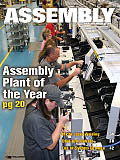Nov 13 2011
Lean Manufacturing in aerospace composites in Abu Dhabi
Via Scoop.it – lean manufacturing
Aviation International NewsStrata Aims For Leadership In CompositesAviation International NewsA factory tour last Thursday underscored Strata’s lean manufacturing approach.
Via www.ainonline.com










Nov 13 2011
Kevin Meyers feels strongly about Lean at Whirlpool
Via Scoop.it – lean manufacturing

Kevin Meyers feels strongly about Lean at Whirlpool
Via superfactory.typepad.com
Share this:
Like this:
By Michel Baudin • Blog clippings 0 • Tags: Lean, Lean assembly, Lean manufacturing, Management